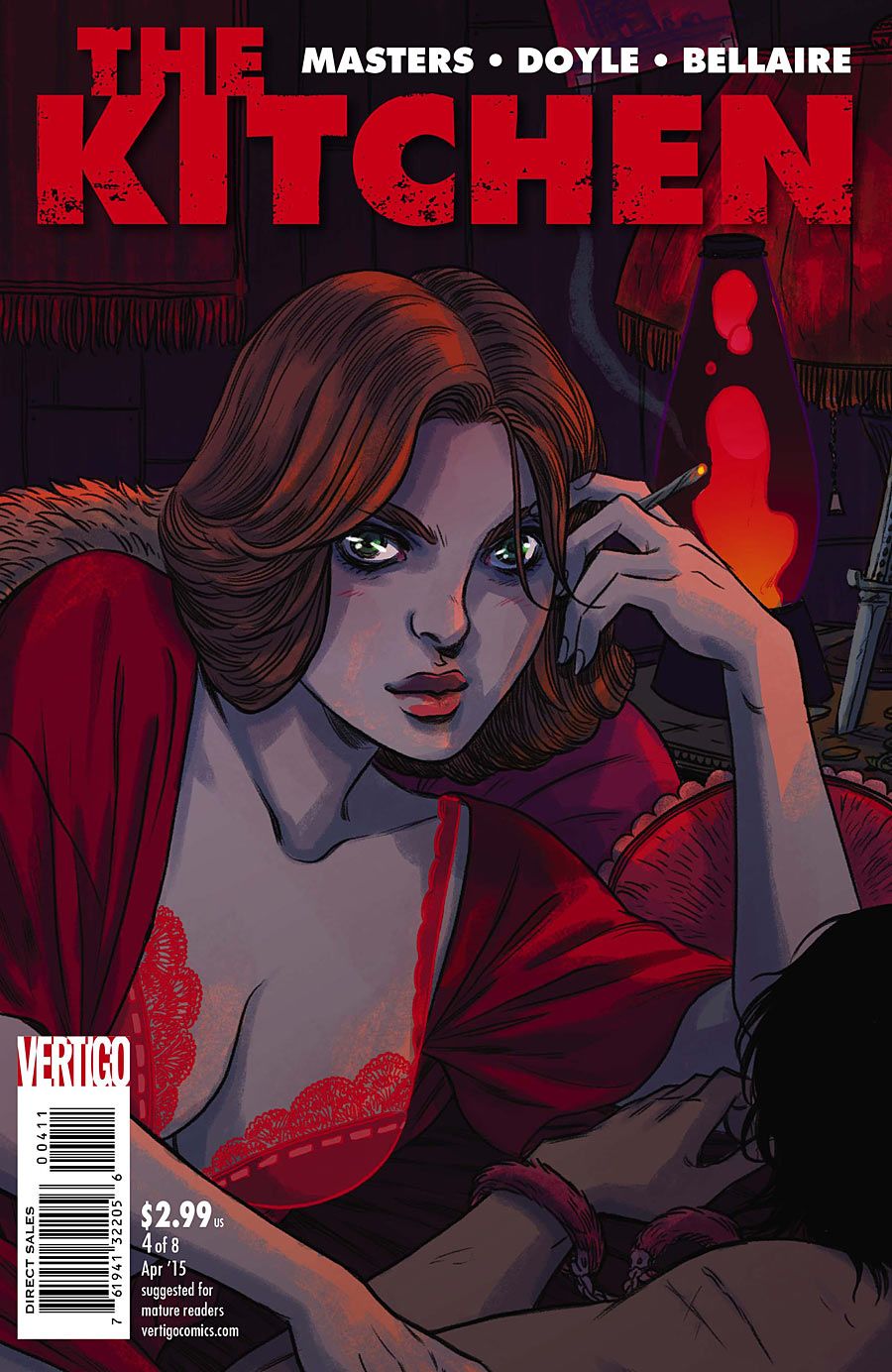Though it's about '70s housewives and mob violence, "The Kitchen" #4 is surprisingly calculated rather than exploitative. The new queens of Hell's Kitchen get an unwelcome surprise when their husbands are released from jail early, and they have to deal with the fallout of usurping their criminal empire. Ollie Masters and Ming Doyle are more concerned with business deals and the internal politics of marriage than they are with violence and gore, and the matter-of-fact executions and ruthless decisions are an asset to the issue. "The Kitchen" has really upped the stakes.
Rather than dramatically stacking the issue toward one pivotal point, Masters presents Angie, Kath and Raven's world as a tapestry of decisions. The structure constantly intersperses one storyline with another, flipping through flashbacks and jumping from execution to homecoming to Mafioso dinner dates. This structure creates a sense of the inevitable by intertwining many stories rather than accelerating one; the criminal underworld of "The Kitchen" is an ever-tighter, inextricable knot. There isn't one bad decision. There are many strategic ones that eventually collide.
In addition, Masters handles the three marriages with surprising complexity. Not all the relationships are unhappy and not all the husbands are brutes. He tells the marriage histories through captions that hover over the husband-wife reunions, again interspersing one story with another. Most interestingly, he delays the story of the happy marriage -- "She loved him... he loved her as well" -- until the end. These were three very different marriages, but they all come to the same end.
Tommy's characterization also continues to surprise me. He's a madman but not a misogynist. Despite an insanity that makes him powerful and feared, he's absolutely comfortable taking orders from Angie, Kath and Raven. Given what all the characters say about him, he was set up as the source of the ladies' problem, but he's not. Masters toys with genre expectations here, and it keeps the story surprising.
Doyle's work really makes this pace and structure possible, however. Her characters, for all their hot pants and flame-print tops, look grounded and real. The Farrah Fawcett hair is matched by lines in the face. Because so little of the violence is discussed, the reader needs to see the decision-making process in the characters' faces, and Doyle achieves that. The discomfort, determination and longing are all visible without the dialogue needing to touch it. The last page is particularly skilled; moving through the five panels, the reader can clearly see Kath's thought process in her face.
Letterer Clem Robins also keeps a firm grip on the text-heavy script. When the women are meeting with Mr. Gargano, Robins negotiates the tight and cluttered panels well enough to keep the sense of claustrophobia without making the panels feel squished. He also places the caption summaries of Kath, Raven and Angie's marriages thoughtfully over the reunion scenes, keeping them separate but relevant to the present-day conversations.
"The Kitchen" doesn't revel in the violence of mob warfare and extortion. Instead, it focuses on the constant risk calculation and emotional turmoil that such a life involves. As such, it's an intriguing and unexpected addition to the market.

